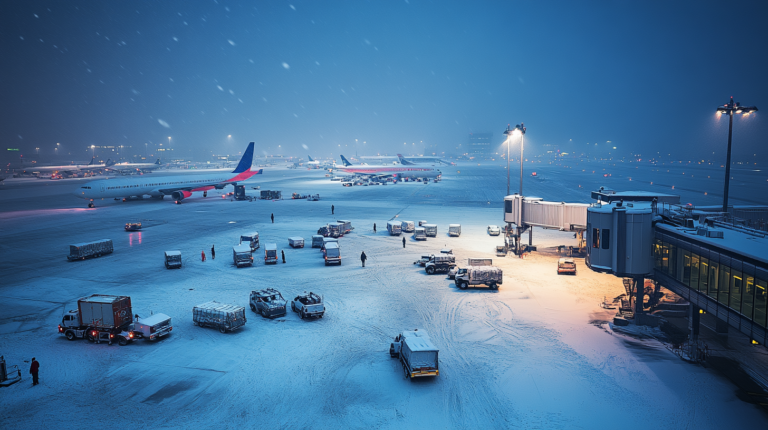Per Diem Decoded: Navigating Business Travel for Frequent Flyers

I’ve always believed that a solid per diem policy serves as a frequent flyer’s best friend. In my own travels, nothing compares to the relief of knowing I don’t have to spend valuable time itemizing every expense. Instead, a per diem offers me predictable daily reimbursements across lodging, meals, and incidentals, which keeps my focus firmly on the journey ahead.
What Is Per Diem?

I view per diem as a fixed sum that employers provide to cover essential travel costs for their team members. According to the U.S. General Services Administration (GSA), typical daily rates range from about $150 to $300—though these figures can shift based on local cost-of-living considerations. While there’s no strict legal requirement dictating these amounts, most companies lean on GSA guidelines as a fair and consistent starting point. It’s important to remember that transportation expenses—such as flights, rideshares, or rental cars—are generally reimbursed separately, so they’re not part of the daily per diem sum.
In my historical notes from talking with colleagues in the aviation industry, many say that not having to carry bags of receipts around is one of per diem’s top perks. A recent study suggests that eliminating the need for detailed receipt management can reduce administrative workload by as much as 40%. Combined with stress-free compliance, it’s easy to see why frequent flyers like me prioritize transparent per diem structures.
I’ve also noticed that some companies opt for a tiered approach, offering slightly higher rates for international destinations where the cost of living can be significantly higher. Whether you’re heading to a remote corner of the globe or a bustling financial center, it’s critical to confirm what your specific per diem covers to avoid unpleasant surprises when you arrive.
IRS Updates for 2024 and 2025

I recall when IRS Notice 2023-68 came into effect on October 1, 2023, adjusting per diem rates for the 2024 fiscal year. Those figures jumped to $309 for high-cost localities and $214 for low-cost areas. From what I’ve observed, this provided a more realistic reimbursement for pricey destinations like San Francisco, New York, and Boston. Then, one short year later—on October 1, 2024—the rates climbed again to $319 and $225, respectively, for the 2024–2025 period. This incremental jump helped account for rising inflation and shifting travel demands, which anyone living through 2025 can appreciate.
When I stick to these prescribed rates and meticulously document my dates, destinations, and travel purposes, my reimbursement tends to remain non-taxable. The same is often true for other frequent flyers. It’s worth noting that self-employed individuals can also leverage per diem, though typically only for meals that appear on Schedule C. According to industry data, small business owners who maintain consistent records see fewer compliance hiccups.
Even as someone who has tracked plenty of per diem changes over time, I still keep an eye on official channels, especially around mid-August. That’s usually the sweet spot for new federal guidance. By regularly reviewing these updates, travelers like me can stay compliant with the latest rules and make smarter decisions about budgeting, whether for short-distance hops or intercontinental journeys.
Common Rate Ranges

On top of official GSA or IRS numbers, most companies in the U.S. set daily allowances anywhere from $150 to $300. Personally, I’ve seen policies across a broad spectrum: some offer a modest rate for junior employees, while others ratchet up reimbursements to match the cost of premium lodging. If you receive anything above these established limits, be aware that the surplus typically goes into your taxable income—a detail I always keep in mind.
In conversations with travel managers at conferences, I’ve learned that the best programs are those flexible enough to adapt to different destinations yet structured well enough to remain straightforward for everyone involved. A recent survey by the Corporate Travel Management Association found that nearly 70% of companies in 2025 employ a blended approach, balancing local costs with standard daily caps.
I’ll add that this is especially relevant for those of us who frequently toggle between luxury hotels and budget stays. While I personally love an upgrade now and again, I’m careful not to exceed any per diem cap that could turn a non-taxable benefit into extra taxable income.
Why Recordkeeping Matters

Over the years, I’ve observed that robust recordkeeping can make or break your per diem claims. Yes, the fixed-rate system aims to minimize paperwork, but the IRS isn’t shy about scrutinizing expense reports. By uploading a clear log of travel dates, locations, and detailed business purposes to my expense app, I keep my finances neat and tidy—and I sleep better at night knowing everything is in order.
If you’re a business owner with a stake of 10% or more, stay aware that the rules might play out a bit differently for you. I’ve seen colleagues in that position consult specialized CPAs for clarity. Beyond that, I always confirm my daily totals align with the authorized rates. Trust me, the fewer red flags in your records, the smoother life becomes during any audit or review.
According to a 2024 report by a leading accounting firm, businesses that provided thorough digital expense logs reduced the likelihood of facing compliance questions by nearly 50%. In my view, that’s reason enough to keep everything as organized as possible.
Practical Tips for Frequent Flyers

I’ve learned to always check which per diem model a company uses—some rely strictly on GSA or IRS rates, while others create their own policies. Usually, I employ a travel expense app to track my receipts, itineraries, and reimbursements in one place. These apps frequently come with real-time currency conversions and route mapping, which simplifies life whenever I cross multiple time zones in a short span.
For high-cost destinations, the elevated per diem can indeed be a lifesaver. Whenever I’m headed to a major financial center with sky-high hotel prices, I rely on that boosted allowance to stay comfortably without worrying about racking up a mountain of receipts. However, I keep an eye on the local per diem limit because overspending could easily lead to tax complications I’d rather avoid.
Finally, I ensure I stay current on the rules, especially because rates often shift annually. I bookmark official government sources and coordinate with a tax professional for additional peace of mind. From what I’ve seen, a little homework up front can lead to considerable savings in the end.
Final Thoughts

Per diem structures don’t just make life simpler—they also encourage smarter budgeting and cleaner compliance, which is a win-win for both travelers and employers. Using a transparent system and respecting the guidelines can help reduce stress, speed up reimbursements, and protect you during tax season.
My advice is to see this approach as a reflection of an organization’s broader travel culture. A detailed, well-communicated per diem policy means your company cares about your comfort on the road. After all, when you’re flying around the globe, you want to focus on making the most of your journey, not on penny-pinching over meals and lodging.
Whether you’re new to business travel or a seasoned jet-setter, a well-managed per diem can keep your flights smooth and your paperwork light. Grasping the ins and outs of these allowances, from the GSA tables to your own company’s internal policies, is the key to a hassle-free travel experience.
Amelia Yeaher’s Take
From my perspective, the power of a per diem lies in its balance of convenience and fairness. It brings structure to the blur of constant motion that defines life on the road. By pairing systematic recordkeeping with a savvy understanding of changing regulations, even the busiest flyers can navigate business travel without losing sight of why they boarded in the first place.
I’ve experimented with numerous per diem methods over the years and remain convinced that, when done correctly, this system helps keep our eyes skyward—not buried in spreadsheets. It’s one of the little luxuries that makes frequent travel sustainable.






